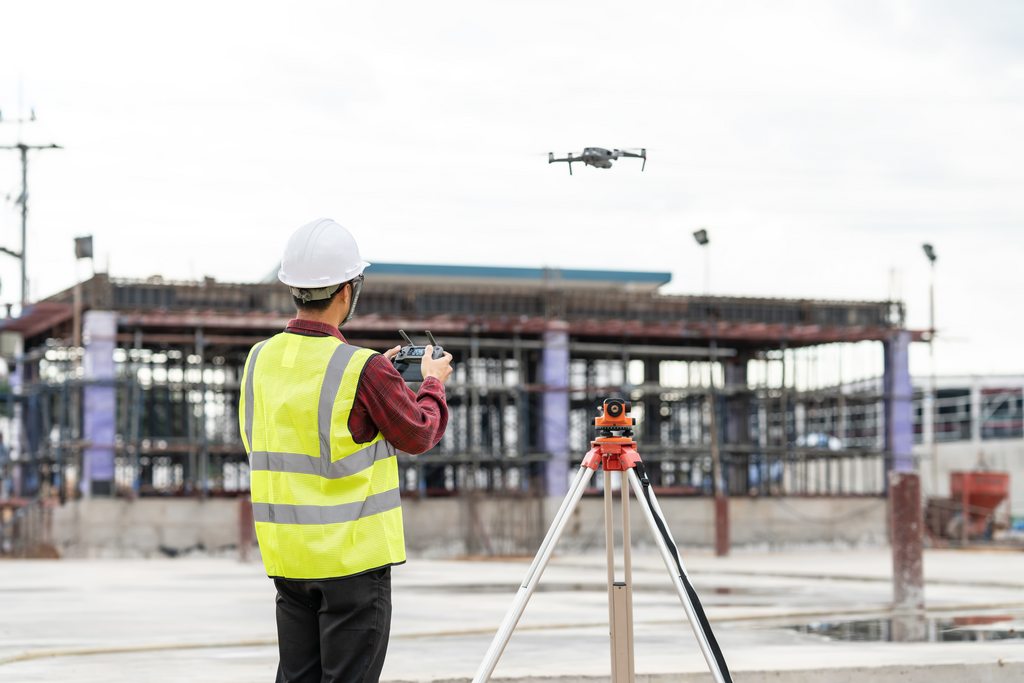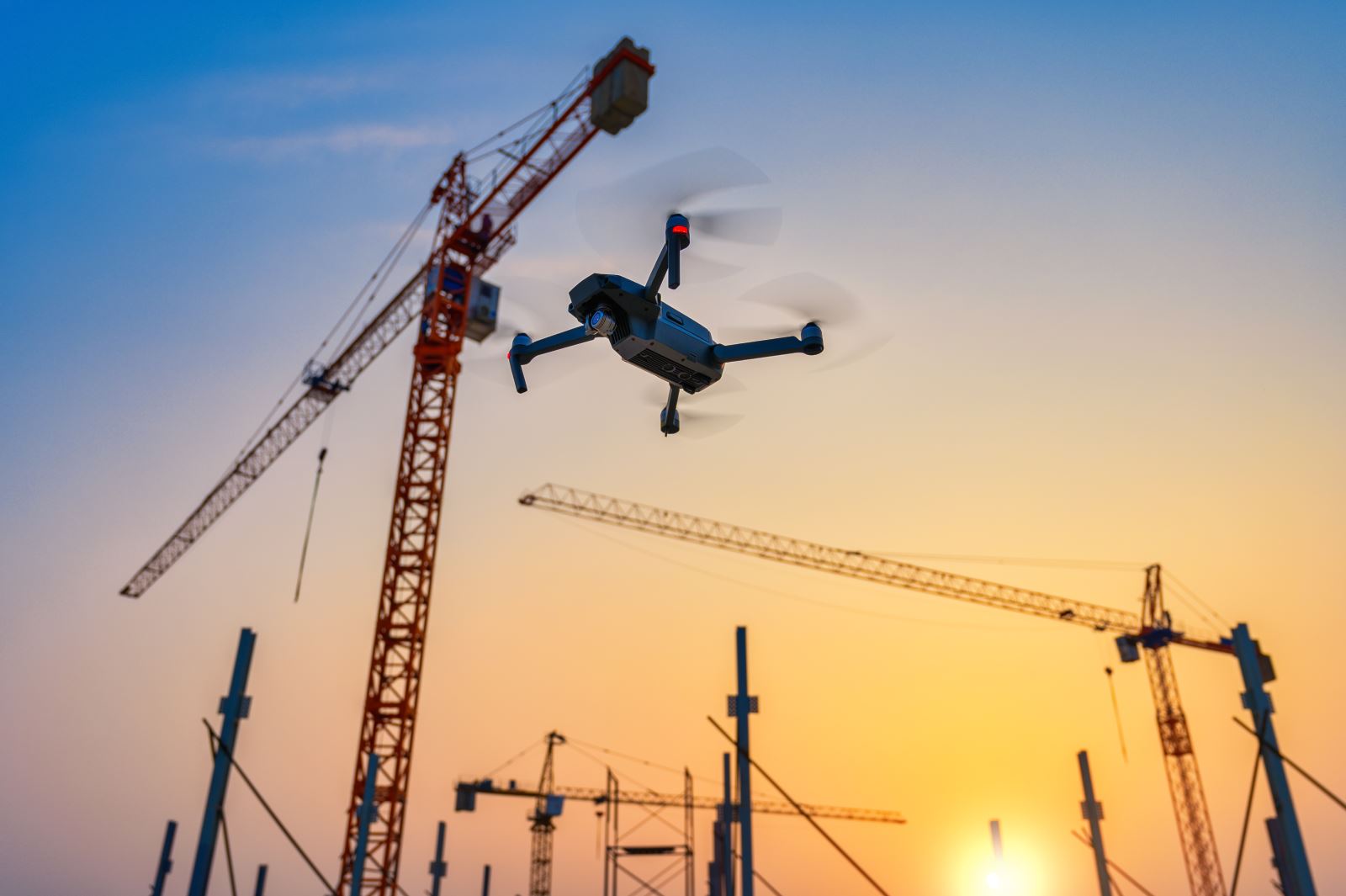Construction Planning and Design
Construction planning and design involve the systematic process of conceptualizing, organizing, and detailing the elements required for a construction project, ensuring efficient use of resources and adherence to safety and regulatory standards.
Benefits Of Construction Planning and Design
Site Surveying and Mapping
Drones can quickly and accurately survey construction sites, providing high-resolution maps and 3D models. This data is valuable for assessing the terrain, understanding the topography, and optimizing the design process.
Safety Enhancement
Drones can significantly reduce the time and cost associated with traditional surveying methods. They can cover large areas in a short time, leading toaDrones can be used to inspect construction sites for safety compliance, identifying potential hazards without putting workers at risk.
Improved Accuracy
Drone technology enables precise measurements and data collection. This accuracy is crucial for construction planning and design, ensuring that all project parameters are taken into account for more reliable outcomes.
Using Drones

Challenges
- Regulatory Compliance:
Adhering to aviation regulations is crucial. Different countries may have varying rules regarding drone usage, including altitude restrictions, no-fly zones, and licensing requirements. Staying compliant with these regulations can be challenging. - Safety Concerns:Safety is a primary concern when deploying drones on construction sites. Drones need to operate safely around construction workers, equipment, and the general public. Proper training and safety protocols must be established and followed.
- Data Security and Privacy: Drones capture high-resolution images and data, raising concerns about data security and privacy. Construction sites often contain sensitive information, and ensuring that data is handled securely and in compliance with privacy laws is a challenge.
- Weather Conditions: Drones are sensitive to adverse weather conditions such as strong winds, rain, and low visibility. Inclement weather can disrupt the drone’s ability to capture accurate data, affecting the construction planning and design process.
- Limited Flight Time: Most drones have a limited battery life, typically ranging from 20 to 30 minutes. This limitation can impact the efficiency of data collection, especially on large construction sites where multiple flights may be required.
- Data Processing and Analysis: Collecting data with drones is just the first step. Processing and analyzing the collected data can be time-consuming and require specialized skills. Integrating drone data seamlessly into the construction planning and design workflow may pose challenges.
- Interference with Existing Infrastructure: Existing structures, power lines, and other infrastructure on construction sites can interfere with drone flights. This requires careful planning and coordination to avoid collisions and damage to both the drone and existing structures.
- Cost of Technology and Training: Acquiring and maintaining drone technology can be expensive, and training personnel to operate drones effectively requires both time and financial investment. Companies may need to weigh these costs against the potential benefits.
How Works
- Surveying and Mapping: Drones equipped with high-resolution cameras or LiDAR sensors can quickly and accurately survey construction sites. They capture aerial images or create detailed 3D maps, providing valuable topographic and geospatial information.
- Aerial Imaging: Aerial imagery captured by drones provides a comprehensive view of the entire construction site. This imagery can be used for visualizing the project, analyzing site conditions, and making informed decisions during the planning and design phases.
- Volume Measurements: Drones can be employed to calculate stockpile volumes accurately. This is particularly useful in construction projects involving earthmoving, as it allows for efficient inventory management of construction materials.
- Design Validation: Overlaying design plans with real-time drone-captured data allows construction teams to validate the accuracy of the construction against the original design. This helps in identifying any deviations early in the process.
- Safety Inspections: Drones can access hard-to-reach or hazardous areas on construction sites, improving safety during inspections. They can be used to assess the structural integrity of buildings, bridges, and other infrastructure components.
- Progress Monitoring: Drones provide a quick and efficient way to monitor construction progress over time. Construction managers can compare drone-captured data at different stages of the project to ensure that the work is proceeding according to schedule.
- Communication and Collaboration: Aerial imagery and data captured by drones can be easily shared among project stakeholders, facilitating better communication and collaboration. This enhances coordination among architects, engineers, contractors, and other team members.
- Cost and Time Savings: By automating data collection and inspections, drones contribute to cost and time savings in construction projects. They reduce the need for manual labor, provide real-time data, and enhance overall project efficiency.
Explore More Content

Construction planning and design form the bedrock of successful and efficient construction projects, involving a comprehensive process that spans from initial conceptualization to the intricate detailing of every aspect. At its core, construction planning entails the strategic organization and arrangement of various elements essential for the execution of a construction project.

The first phase of construction planning involves conceptualizing the project, outlining its scope, objectives, and requirements. This initial stage lays the foundation for the subsequent planning and design activities. Following this, the planning process delves into developing project timelines, scheduling milestones, and estimating costs.

Furthermore, construction planning and design involve the identification and mitigation of potential risks. This proactive approach addresses challenges before they arise, ensuring a smoother construction process. It also includes considerations for environmental impact, sustainability, and energy efficiency

The utilization of advanced technologies, such as Building Information Modeling (BIM), enhances the efficiency of construction planning and design. BIM allows for the creation of detailed 3D models that provide a holistic view of the project, facilitating better collaboration among various stakeholders and minimizing errors during the construction phase.